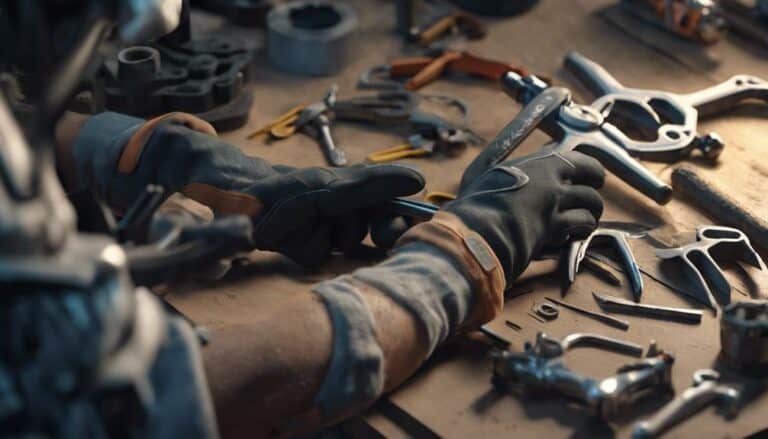Have you ever wondered if you should tackle a dirt bike oil change on your own or leave it to a professional mechanic?
The decision may seem challenging at first, but understanding the benefits and potential pitfalls of each option can help you make an informed choice.
By weighing the advantages of a DIY oil change against the expertise of a trained mechanic, you can determine the best course of action for maintaining your dirt bike's performance and longevity.
Key Takeaways
- DIY oil changes offer control, quality, and understanding.
- DIY accessible to all skill levels for proactive maintenance.
- Professional help needed for complex tasks or intricate components.
- Ensure correct procedures, tools, and disposal for DIY success.
Benefits of DIY Dirt Bike Oil Changes
Performing your own dirt bike oil changes offers significant advantages beyond just saving money on labor costs. When you choose to do a DIY oil change, you take control of the maintenance process, ensuring that only the highest quality oil and filter are used in your bike. This level of control guarantees that your dirt bike receives the best care possible, tailored to its specific needs.
Engaging in DIY oil changes also deepens your understanding of your dirt bike's maintenance requirements. By getting hands-on with this essential task, you gain valuable insights into how your bike operates and what it needs to perform at its best. This knowledge empowers you to make informed decisions about your dirt bike's care and maintenance schedule.
DIY oil changes are relatively straightforward and can be completed with basic tools, making them accessible to riders of all skill levels. By regularly performing oil changes yourself, you stay ahead of your dirt bike's maintenance schedule, ensuring peak performance and longevity.
Tools Needed for DIY Oil Change
For a successful DIY dirt bike oil change, gather essential tools like a socket wrench, oil filter wrench, funnel, oil pan, and a new oil filter. Ensuring you have the right equipment will make the process smoother and more efficient. Additionally, having a torque wrench, shop rags, safety glasses, and latex gloves is important for maintaining cleanliness and ensuring your safety during the oil change. Using a bike stand or lift can greatly facilitate accessing the oil drain plug and filter, making the job easier. Keep a service manual specific to your dirt bike model on hand to guide you through the oil change procedures and provide torque specifications. Investing in a quality oil filter and using the correct oil type and viscosity tailored to your dirt bike is crucial for optimal engine performance and longevity.
| Tools | Description | Importance |
|---|---|---|
| Socket Wrench | For removing bolts | Essential |
| Oil Filter Wrench | Facilitates filter removal | Crucial |
| Funnel | Aids in pouring oil | Important |
| Oil Pan | Collects old oil | Necessary |
Step-by-Step Guide for DIY Oil Change
To initiate the DIY oil change process on your dirt bike, the first step is to make certain the engine is adequately warmed up for smooth oil drainage. Start by running the engine for a few minutes to warm up the oil.
Next, locate the oil drain plug underneath the bike and place an oil pan beneath it. Carefully remove the drain plug to let the old oil flow out completely. Once drained, locate the oil filter, unscrew it, and replace it with a new one to ensure peak engine performance and longevity.
After replacing the oil filter, fill the engine with the recommended amount of fresh oil using a funnel. Check the oil level using the dipstick to ensure it's at the correct level. Double-check all connections, tighten bolts to the specified torque, and dispose of the old oil responsibly at a recycling center.
This step-by-step guide guarantees proper bike maintenance and helps keep your engine running smoothly.
Common Mistakes to Avoid
When conducting a dirt bike oil change, make sure to avoid common mistakes that could compromise the process and potentially harm your bike's engine.
- Avoid over-tightening: When securing the oil drain plug, be cautious not to over-tighten it. Doing so can damage the threads or the plug itself, leading to leaks and difficulties in future oil changes.
- Replace the crush washer: Always remember to replace the crush washer or gasket when reinstalling the drain plug. This guarantees a proper seal, preventing oil leaks and maintaining the integrity of the oil system.
- Use the correct oil filter: Selecting the correct oil filter designed for your dirt bike model is essential. Using the wrong filter can result in oil leaks, filter failure, and potential engine damage.
When to Seek Professional Help
Consider professional assistance for tasks involving intricate components like changing fork seals, suspension adjustments, cracked casings, and valve replacements to guarantee excellent care for your dirt bike.
While changing oil can often be managed on your own, certain maintenance tasks require mechanic intervention due to their complexity and the need for specialized knowledge. It's important to assess your skill level and comfort with maintenance tasks before deciding whether to seek professional help.
Professional mechanics possess the experience and tools necessary to tackle more challenging issues effectively, ensuring the longevity and performance of your dirt bike. When unsure about a task's complexity or safety implications, it's best to consult a professional mechanic for guidance.
Conclusion
To sum up, taking the time to perform a DIY dirt bike oil change can save you money and give you a sense of accomplishment. Remember, practice makes perfect, so don't be afraid to get your hands dirty and learn something new.
As the saying goes, 'A stitch in time saves nine,' so taking care of your dirt bike's maintenance now can prevent costly repairs down the road. Happy riding!

